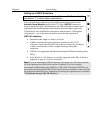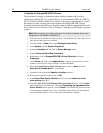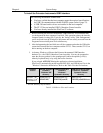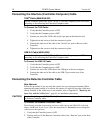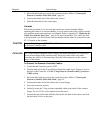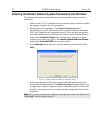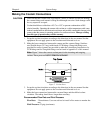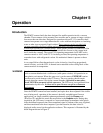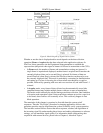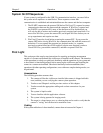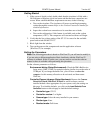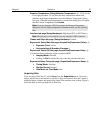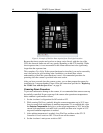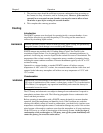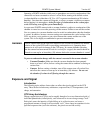
35
Chapter 5
Operation
Introduction
The PI-MTE camera family has been designed for mobile operation inside a vacuum
chamber. These cameras can be mounted on a movable arm in vacuum to image a subject
from more than one direction. Designed for operation with an ST-133 controller, these
cameras incorporate a two-stage thermoelectric cooler with heat dissipation to circulating
water or other (non-cryogenic) liquid coolant. These cameras can be provided with
vacuum-compatible electrical cabling and coolant hoses and with corresponding
feedthroughs mounted on a vacuum flange. These options provide for connection of the
camera controller and liquid coolant system (outside the vacuum) to the camera head
itself (inside the vacuum). The typical CCD operating temperature for PI-MTE series
cameras extends to -40°C with +15°C circulating coolant; the operating temperature is
somewhat lower with refrigerated coolant. No mechanical shutter is present on these
units.
A two-stage Peltier effect thermoelectric cooler, driven by closed-loop proportional-
control circuitry, cools the CCD. A thermal sensor attached to the cooling block of the
camera monitors its temperature.
Two front sections (noses) are available for the PI-MTE camera: an open nose for work
inside a vacuum chamber and a visible nose (with quartz window) for operation in an
atmospheric environment. When the open nose is on the camera, EXTREME caution
must be used to avoid damage to the CCD array. The nose opening should remain
covered when the camera is not in the vacuum chamber. Operation in atmosphere
should NEVER be attempted with the open nose. The CCD array is not protected from
contamination by this nose. It is best not to open this nose except in a cleanroom
environment.
Once the PI-MTE camera has been installed (and optics have been adjusted if the visible
nose is being used), operation of the camera is basically straightforward. In most
applications you simply establish optimum performance using the Focus mode
(WinView/32) and then do actual data acquisition in the Acquire mode. During data
acquisition, the CCD array is exposed to a source and charge accumulates in the pixels.
After the defined exposure time, the accumulated signal is readout of the array, digitized,
and then transferred to the host computer. Upon data transfer, the data is data is
displayed and/or stored via the application software. This sequence is illustrated by the
block diagram shown in Figure 8.
WARNING



